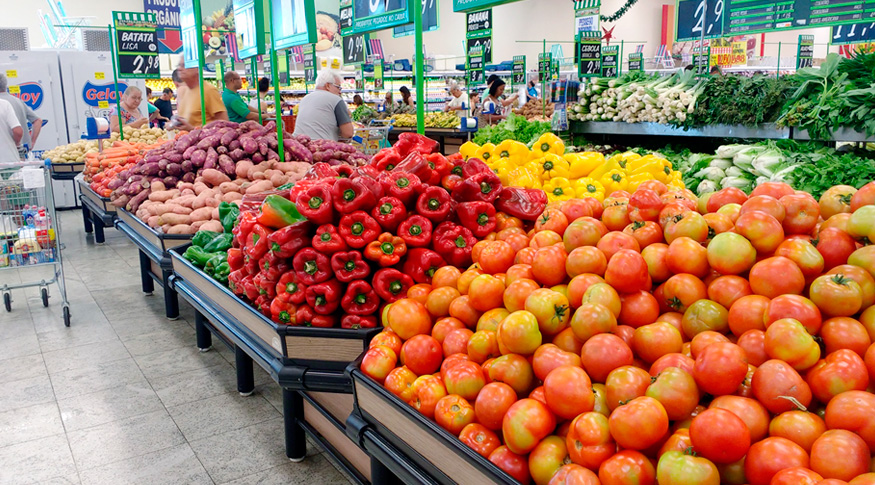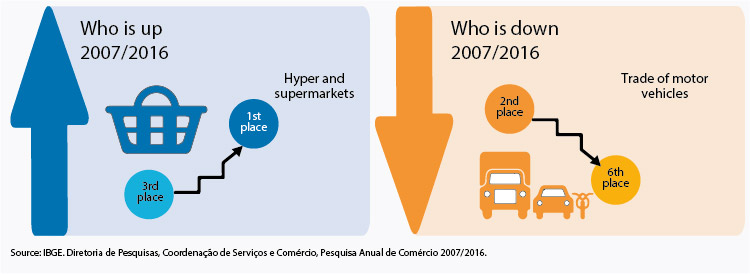Annual Survey of Trade
Participation of food-related activities grows in trade
June 28, 2018 10h00 AM | Last Updated: June 29, 2018 12h05 PM

From 2007 to 2016, "Hypermarkets and supermarkets" and the wholesale and retail trade in "food, beverages and tobacco" were the activities that mostly increased their participation in the net revenue of the Brazilian trade. On the other hand, the sectors "wholesale of fuels and lubricants" and "trade of motor vehicles, parts and motorcycles" registered the biggest falls in the ranking of commercial activities in the same period.
These data are from the Annual Survey of Trade 2016 (PAC), released today by the IBGE, which provides information on the productive structure of commercial enterprises in the country.
The gain of participation of the hypermarket and supermarket sector, which moved from the third position in 2007 to the first in 2016, from 9.4% to 12.4%, is related to the losses of the sector of motor vehicles, pieces and motorcycles, which moved down from the second (11.0%) to the sixth place (6.0%).
"With the recent crisis, we realized that the sale of motor vehicles has fallen. Another element of the survey that can confirm this aspect is the wholesale sector of fuels. It used to be the first of the ranking and today it is the second, since it was overtaken by the hypermarkets and supermarkets sector," explains CAP manager Danielle Oliveira.

The survey figures show the period when the economic crisis starts to influence these sectors. In real terms, from 2015 to 2016, the net revenue from motor vehicles fell 9.6%, after having fallen 13.8% between 2014 and 2015 and 4.3% between 2013 and 2014. The activity of hypermarkets and supermarkets dropped by 1.5% between 2015 and 2016, had a fall of 0.9% between 2014 and 2015, but grew by 11.7% between 2013 and 2014, accumulating in the 2007-2016 period an increase of 81.4% - higher than the growth of motor vehicles (45.2%).
"In the supermarket, you can replace brands, but you do not stop buying food. Now, you can do without a car. How many clothes shops have closed recently? How many car shops have closed because of the crisis? Now, we haven’t seen hypermarkets closing, even though they have had reduced sales," says Juliana Paiva, manager of economic surveys at the IBGE.
According to Danielle, the sector of hypermarkets and supermarkets is the largest in the retail trade: "Despite having the smallest number of companies, [hypermarkets and supermarkets] have the highest net operating revenues and the highest salaries; besides, it is the second biggest employer of trade". The sector of food, beverages and tobacco sector also stands out for having the largest number of companies and the largest number of employed persons.

In 2016, Brazil had 1.547 million commercial enterprises, which generated R$3.3 trillion in net operating revenue, paid R$214.8 billion in salaries, withdrawals and other compensation and employed 10 million people, in 1,685 million local units. In that same year, the Southeast accounted for 49.6% of local units, 51.8% of employed persons, 51.3% of gross resale revenue, 55.7% of total wages and the highest average monthly salary (2.1 minimum wages).




















